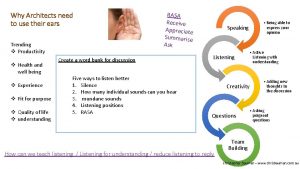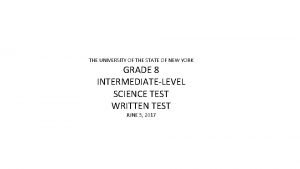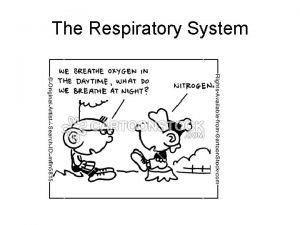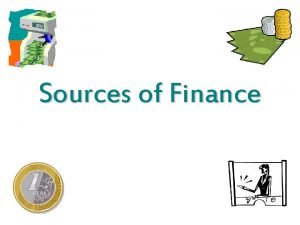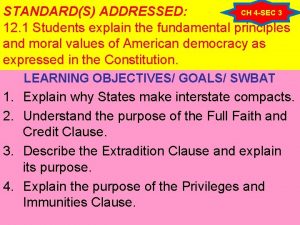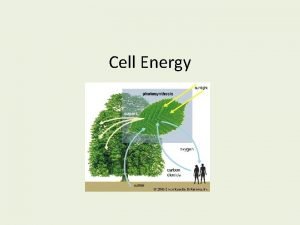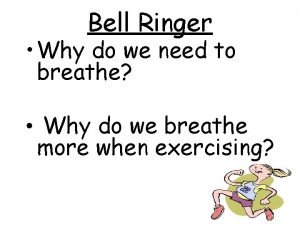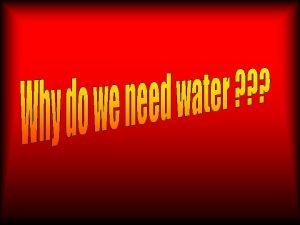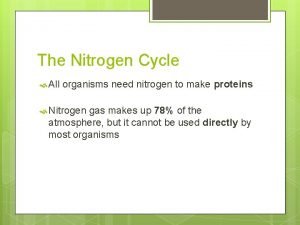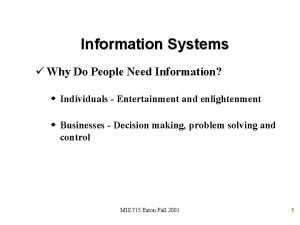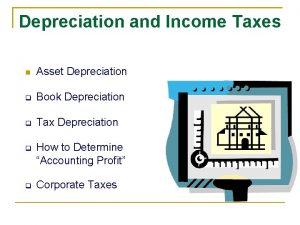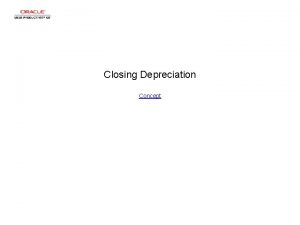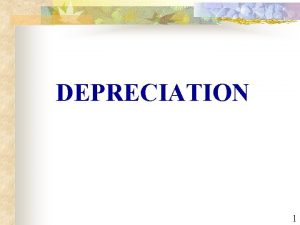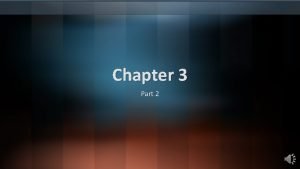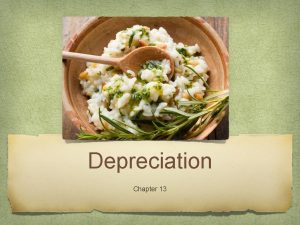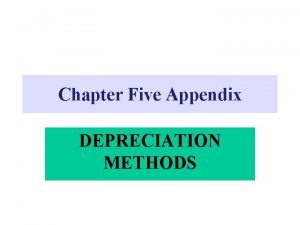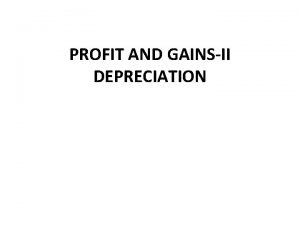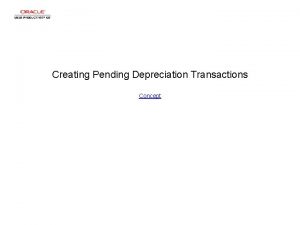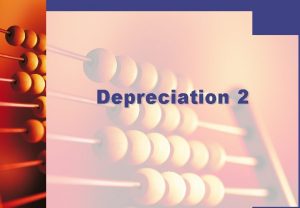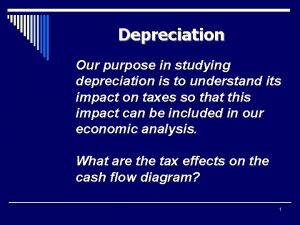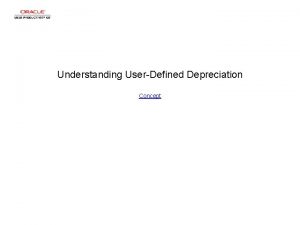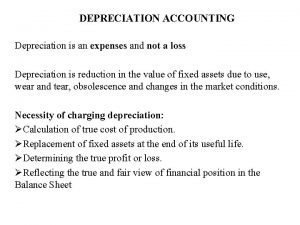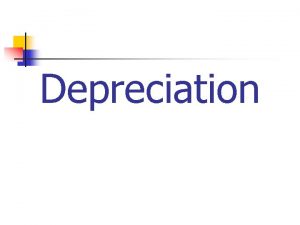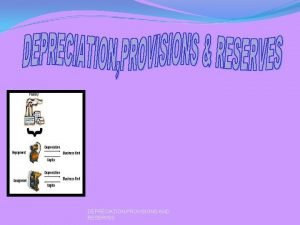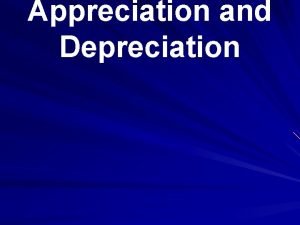Depreciation Chapter Outline What is depreciation Why need

















- Slides: 17

Depreciation Chapter Outline What is depreciation? Why need depreciation? What is depreciable assets? Why assets depreciate? Methods of calculating depreciation. PDT 309 - Manufacturing Economics

What is depreciation? A noncash expense that reduces the value of an asset as a result of wear and tear, age, or obsolescence. Most assets lose their value over time (in other words, they depreciate), and must be replaced once the end of their useful life is reached. PDT 309 - Manufacturing Economics

Why need depreciation? “ Many businesses must take into account depreciation because much of their equipment is not worth as much now as it was when it was first purchased. ” To reflect the real market value of certain assets PDT 309 - Manufacturing Economics

What is depreciable assets? • • A non-current asset/fixed asset is an asset intended for use on a continuing basis in the business. Depreciable assets classified as assets that will depreciate in value over time. Example: Motor vehicle, Computer equipment, Furniture, Machinery What about building, house, land? PDT 309 - Manufacturing Economics

Why assets depreciate? Wear & tear Obsolescence Fluctuation in price Time Usage Physical factors PDT 309 - Manufacturing Economics

Wear & Tear This is the physical using up of a NCA, which may take the form of corrosion, rot, rust and decay. Thus motor vehicle and machinery for example will wear out or rust as they are being used constantly. PDT 309 - Manufacturing Economics

Obsolescence This refers to the causing of a NCA to be out of date or to become obsolete mainly because of new technological advance. The NCA may potentially still be able to physically generate revenues but its useful life is cut short because better technological assets are available to replace. PDT 309 - Manufacturing Economics

Price Fluctuation A general change in prices or foreign exchange rates causes the money value of NCA to change. Example case of inflation, price may goes up or goes down. PDT 309 - Manufacturing Economics

Time usage This is the passage of time that makes the NCA less valuable. As a piece of equipment gets used over time, it becomes less efficient and less reliable and hence becomes less valuable over time. PDT 309 - Manufacturing Economics

Physical Factors Flooding, dampness, excessive heat, high humidity or excessive cold may make NCA asset lose its value. Some machine, example machine that used in producing microchips are sensitive to heat, dust etc. PDT 309 - Manufacturing Economics

Methods of calculating depreciation Straight Line Method Declining Balance Method PDT 309 - Manufacturing Economics

Straight Line Method The straight line method of depreciation records an equal portion of the cost of NCA as depreciation expense in each accounting period in which the asset is used. Annual depreciation expense Original cost – Expected Residual Value Expected Economic Life (in years) PDT 309 - Manufacturing Economics

Example: Straight Line Method Sarkans has a year end of 31 December each year. On 1 April 2002 he purchases a car for RM 12, 000. The car is expected to last for 5 years and to have a estimated scrap value at the end of 5 years of RM 2, 000. Calculate the annual depreciation expense using straight line method. PDT 309 - Manufacturing Economics

Answer: Straight Line Method Annual depreciation expense Original cost – Expected Residual Value Expected Economic Life (in years) (RM 12, 000 – RM 2, 000)/5 years = RM 2, 000 annual depreciation expense PDT 309 - Manufacturing Economics

Declining Balance Method charges depreciation at a higher rate in the earlier years of an asset. The amount of depreciation reduces as the life of the asset progresses. Depreciation under reducing balance method may be calculated as follows: Annual Depreciation Expense = (Net Book Value - Residual Value) x Rate% Where: Net Book Value is the asset's net value at the start of an accounting period. It is calculated by deducting the accumulated (total) depreciation from the cost of the fixed asset. PDT 309 - Manufacturing Economics

Example: Declining Balance Method Assume that a business has a motor vehicle which was purchased on January 1, 2013 for RM 50, 000. The business decides to use 30% as the fixed percentage to be applied for calculation of the annual depreciation expense for the motor vehicle. Calculate the depreciation value for Year 2. PDT 309 - Manufacturing Economics

Answer: Declining Balance Method Yea r Computation Depreciation Expense (RM) Accumulated Depreciation (RM) Residual Value (RM) 1 30% x RM 50, 000 15, 000 35, 000 2 30% x RM 35, 000 10, 500 25, 500 24, 500 PDT 309 - Manufacturing Economics
 Hey hey bye bye
Hey hey bye bye Don't ask why why why
Don't ask why why why Quotation sandwich
Quotation sandwich Why architects need to use their ears
Why architects need to use their ears Shylock speech
Shylock speech Three living organisms
Three living organisms Why do we need to breathe
Why do we need to breathe Why do businesses need finance
Why do businesses need finance Why we need computer
Why we need computer Why do we need to breathe
Why do we need to breathe Why do we need arrays?
Why do we need arrays? Why might states feel the need to form compacts
Why might states feel the need to form compacts Do cells need energy
Do cells need energy Why do we need to breathe
Why do we need to breathe Why is agility important in tennis
Why is agility important in tennis Why do we need water
Why do we need water All organisms need nitrogen to
All organisms need nitrogen to Why do people need information
Why do people need information



